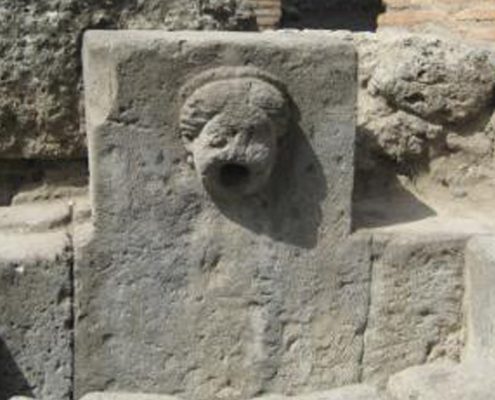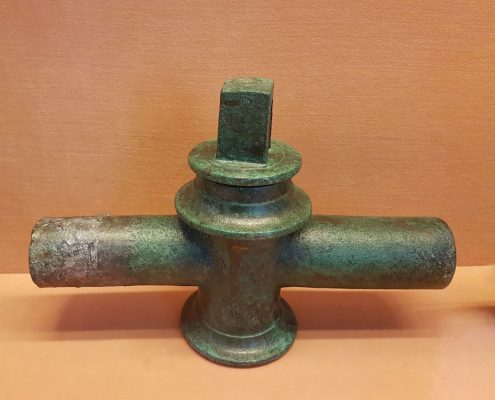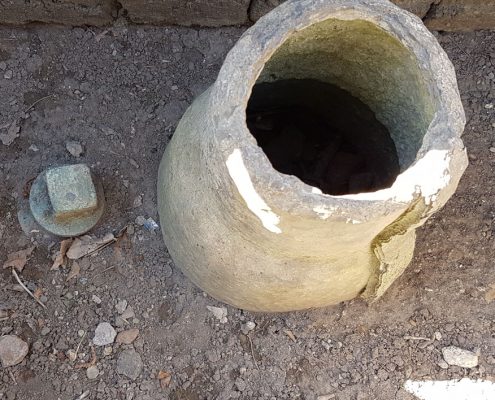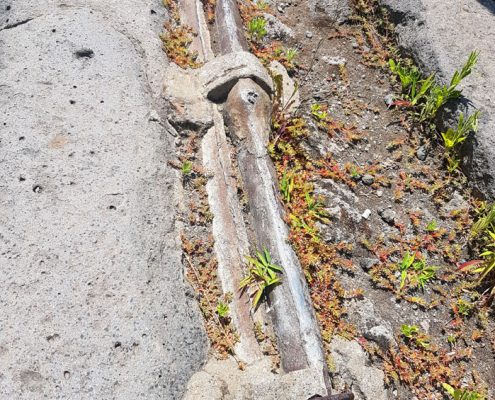TWO-HOUR GUIDED TOUR OF POMPEII AND ITS WATER SUPPLY WITH AN ARCHAEOLOGIST
Private Tour
(admission tickets not included)
Tour Duration
2 Hours
Tour Availability
All year long
Meeting Point
By the Bar Sgambati at Pompeii
What makes this tour special?
In the first century A. D. Pompeii was a medium-sized Roman town with a population of about 16,000 inhabitants. Follow an experienced archaeologist in this journey through time in the Pompeii of two thousand years ago to visit some of the best frescoed homes, shops, Public Baths and other breath taking sites , and to comprehend fully, among the curiosities and anecdotes, how the town’s aqueduct efficiently worked and how, in those times, it supplied so many buildings of the ancient town with water.
Benefit from skip-the-line access in Pompeii with your official local guide/archaeologist and you’ll maximize your precious time. We will do our best for making your tour memorable.
Enjoying the company of an expert archaeologist means being able to skip the crowd even in high season when thousands of people roam the ancient city: Pompeii site covers around 150 acres. Therefore with a good connoisseur of the archaeological site you can cover some of the most incredible parts of Pompeii without meeting many tourists.
Why is Pompeii so crucial for the comprehension of Roman aqueduct?
Pliny the Elder wrote: “The Romans cared about three things above all, which were neglected by the Greeks, that is, in opening the streets, constructing aqueducts and placing the cloacae underground”.To fully understand the technical efficiency of the Romans, it is essential to keep in mind the efficiency of their aqueducts. The writers Pliny the Elder and Frontinus praised the great achievements of hydraulic engineering and consequently the extraordinary quantity of water made available. Both authors thought that the world offered nothing more extraordinary because it was extremely useful and with practical purposes compared, for example, to useless Egyptian pyramids or to other Greek constructions. To appreciate the Roman technological level, it is sufficient to consider that the water consumption in Rome during the Imperial age was very high, not much lower than that of the present day. Pompeii is the only place in the world where it is possible to find “in situ”, on the spot, public fountains, lead pipes (“fistulae”), water towers (“castella aquae”), valves for connection to houses, water blocking taps, filters, etc., for water distribution throughout the city. It is therefore obvious that Pompeii is the ideal place to perform specific studies on how a Roman aqueduct worked. Together with an archaeologist, expert on the subject, you will walk along the streets of the ancient city appreciating and understanding how the water was distributed so efficiently throughout the city.
How did the Romans solve the problem of the lead poisoning of the aqueducts ?
During the visit to Pompeii, you’ll make the “classic” tour with the visit of some of a typical Roman Houses, shops, streets, Public Baths etc. during this tour you will also often notice along the streets lead pipes (“fistulae”) used in the Imperial era to take water from one point to another in the city. However, lead was very toxic and the problem was well known and feared by the ancient Romans. Discover with an archaeologist, an expert on the subject, how the Roman engineers solved brilliantly the problem of lead poisoning by applying certain solutions that could be defined as “futuristic”.
This post is also available in: Italian








